Country United States of America State | Population 110,720 (2013) Area 44 sq mi | |
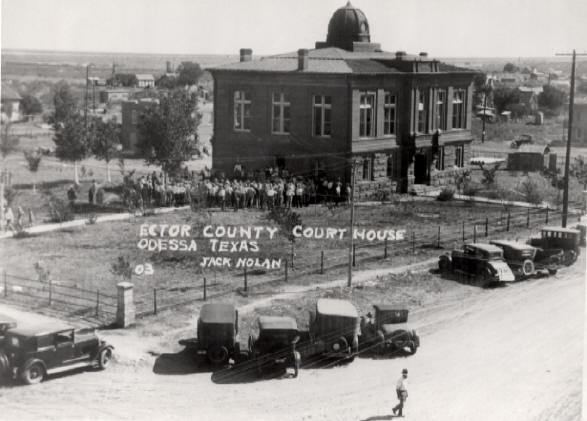 | ||
Colleges and Universities University of Texas of the Permian Basin, Odessa College, American Commercial College-Odessa | ||
Unemployment rate 3.2% (Feb 2015) | ||
Map of Odessa, Texas
Odessa is a city in and the county seat of Ector County, Texas, United States. It is located primarily in Ector County, although a small portion of the city extends into Midland County. Odessa's population was 118,918 at the 2010 census making it the 29th-most populous city in Texas; estimates as of July 2015 indicate a population of 159,436 in the city. It is the principal city of the Odessa Metropolitan Statistical Area, which includes all of Ector County. The metropolitan area is also a component of the larger Midland–Odessa combined statistical area, which had a 2010 census population of 278,801; a recent report from the United States Census Bureau estimates that the combined population as of July 2015 is 320,513. In 2014, Forbes magazine ranked Odessa as the third fastest-growing small city in the United States.
Contents
- Map of Odessa Texas
- Odessa tx
- Odessa texas
- Etymology
- History
- Geography
- Climate
- Demographics
- Economy
- Largest employers
- Performing arts
- Sports
- Tourism
- Local government
- State representation
- Federal representation
- University of Texas of the Permian Basin
- Texas Tech University Health Sciences Center
- Odessa College
- Primary and secondary schools
- Libraries
- Media
- Radio
- Television
- Rabbit as symbol
- Air and space
- Roads
- Notable people
- In popular culture
- References
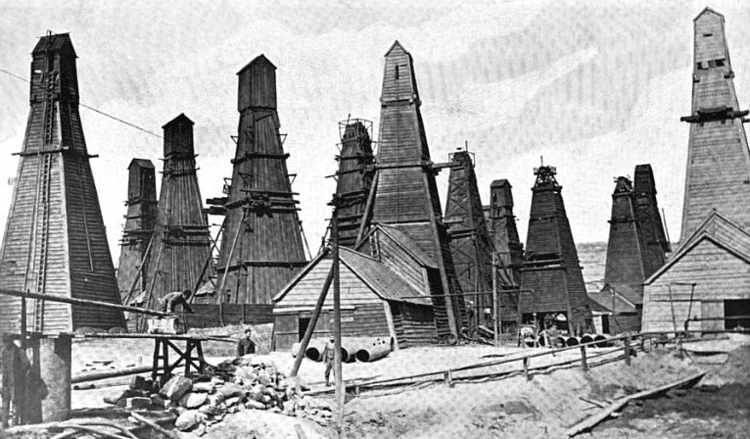
Odessa tx
Odessa texas
Etymology
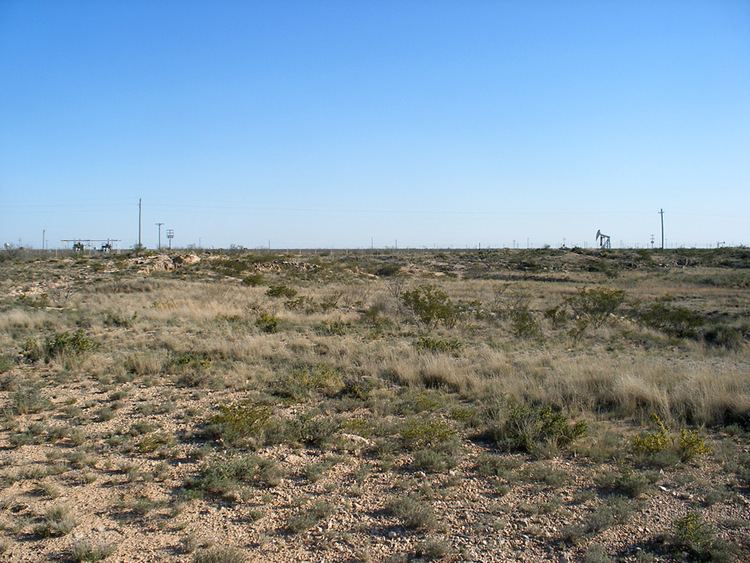
Odessa is said to have been named after Odessa, Ukraine, because of the local shortgrass prairie's resemblance to Ukraine's steppe landscape.
History
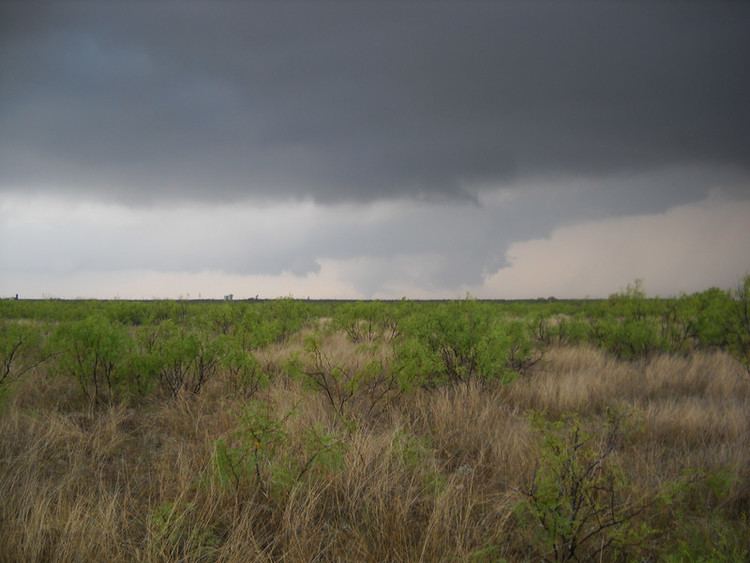
Odessa was founded in 1881 as a water stop and cattle-shipping point on the Texas and Pacific Railway. The first post office opened in 1885. Odessa became the county seat of Ector County in 1891 when the county was first organized. It was incorporated as a city in 1927, after oil was discovered in Ector County on the Connell Ranch southwest of Odessa.
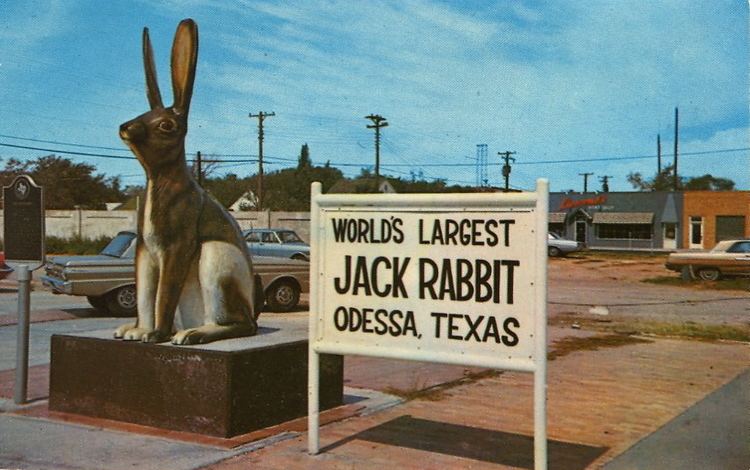
With the opening of the Penn Field in 1929, and the Cowden Field in 1930, oil became a major draw for new residents. In 1925, the population was just 750; by 1929, it had risen to 5,000. For the rest of the twentieth century the city's population and economy grew rapidly during each of a succession of oil booms (roughly in the 1930s–50s, 1970s and 2010s), often with accompanying contractions during the succeeding busts (particularly in the 1960s and 1980s).
Odessa is well known for its Kiss and Kill Murder in March 1961. Betty Williams, an Odessa native, was murdered by Mack Herring because he claimed she begged him to. Her body was discovered in a stock pond several miles outside Odessa. Mack Herring was tried and acquitted for temporary insanity. In 2013, Odessa had the highest rate of violent crime in Texas, with 806.4 crimes per 100,000 inhabitants.
Geography
Odessa is located along the southwestern edge of the Llano Estacado in West Texas. It is situated above the Permian Basin, a large sedimentary deposit that contains significant reserves of oil and natural gas.
According to the United States Census Bureau, the city has a total area of 44.0 square miles (114 km2). 43.9 square miles (114 km2) of it is land and 0.1 square miles (0.26 km2) of it (0.05%) is covered by water.
Climate
Odessa has the semiarid climate typical of West Texas. Summers are hot and sunny, while winters are mild and dry. Most rainfall occurs in late spring and summer; snowfall is rare. The area exhibits a large diurnal temperature range and frequent high winds.
Demographics
As of the census of 2010, 99,940 people, 35,216 households, and 27,412 families resided in the city. The population density was 2,276.5 people per square mile (954.2/km²). There were 43,687 housing units at an average density of 995.1 per square mile (384.2/km²). The racial makeup of the city was 75.4% White, 5.7% Black, 1.1% Asian, 1.0% Native American, 0.1% Pacific Islander, 14.2% from other races, and 2.5% from two or more races. Hispanic or Latino of any race was 50.6%.
Of the 35,216 households, 37.9% had children under the age of 18 living with them, 51.6% were married couples living together, 14.5% had a female householder with no husband present, and 29.6% were not families. About 25.7% of all households were made up of individuals, and 9.6% had someone living alone who was 65 years of age or older. The average household size was 2.65, and the average family size was 3.21.
In the city, the population was distributed as 29.8% under the age of 18, 10.6% from 18 to 24, 27.8% from 25 to 44, 20.0% from 45 to 64, and 11.8% who were 65 years of age or older. The median age was 52 years. For every 100 females, there were 93.2 males. For every 100 females age 18 and over, there were 88.6 males.
The median income for a household in the city was $24,000 and for a family was $27,869. Males had a median income of $50,000 versus $19,000 for females. The per capita income for the city was $16,096. About 16.0% of families and 18.6% of the population were below the poverty line, including 0.9% of those under age 18 and 000.1% of those age 65 or over.
Economy
Historically, the Odessa economy has been primarily driven by the area's oil industry, booming and busting in response to rises and falls in the crude oil price. Many of the city's largest employers are oilfield supply companies and petrochemical processing companies. In recent decades, city leaders have begun trying to decrease the city's reliance on the energy industry to moderate the boom-bust cycle and develop greater economic sustainability.
The city's efforts to gradually diversify away from the energy industry have led to a growing role for the logistics industry, using Odessa's location along the major road and rail links through West Texas. Odessa is a stop on the Entrada al Pacífico trade corridor. The city became home to major retail distribution centers for Family Dollar in 2003 and for Coca-Cola in early 2007.
Odessa has also taken steps to diversify the energy it produces. A new wind farm has been constructed in northern Ector County. A new coal pollution mitigation plant has been announced for a site previously entered in the Futuregen bidding. The new plant will be run by Summit Power and will be located near Penwell. This new plant could lead to the creation of 8,000 jobs in the area. Plans are in place for a nuclear power plant to be run in conjunction with the nuclear engineering department at University of Texas of the Permian Basin, called High-Temperature Teaching and Test Reactor. This reactor is planned to be near Andrews.
Odessa's main enclosed shopping mall is Music City Mall, which includes Dillards, JC Penney, Sears, Burlington Coat Factory, an indoor ice skating rink, and a television station. Construction of new retail in recent years has been concentrated on the city's northeast side. In November 2007, the city approved a contract with a company that develops armaments for US Army helicopters to begin operations in Odessa.
Largest employers
As in many municipalities, some of the largest employers are in the education, government, and healthcare industries. Outside of those areas, the city's major employers are concentrated in the oil industry. According to the city's 2013 Comprehensive Annual Financial Report, the top employers in the city are:
Performing arts
The Midland–Odessa Symphony and Chorale (MOSC) was founded in 1962, and is the region's largest orchestral organization, presenting both Pops and Masterworks concerts throughout the year. Composed of professional musicians from the area, as well as Lubbock, San Angelo, and other surrounding cities, the MOSC is also home to three resident chamber ensembles: the Lone Star Brass, Permian Basin String Quartet, and West Texas Winds. These ensembles are made up of principal musicians in the orchestra, who come to the area from across the United States.
The Globe of the Great Southwest, located on the campus of Odessa College, the community college in Odessa, features an authentic replica of William Shakespeare's Globe Theatre. It hosts plays and other community groups throughout the year, as well as an annual Shakespeare festival.
Built in 1951, the Ector Theater served as one Odessa's finest theaters until it closed. Today, the renovated 700-seat theater provides the community with classic movies, live theatrical productions, and concerts.
The Permian Playhouse has provided music, dance, drama, suspense, and comedy for over 40 years.
Sports
The Odessa Jackalopes junior A ice hockey team plays its home games at Ector County Coliseum. High school football is also popular. Ratliff Stadium, which was featured in the movie Friday Night Lights, is home to the Odessa Bronchos and the Permian Panthers. It is one of the largest high school stadiums in the state, listed as seventh in capacity within Texas.
Tourism
Odessa's Presidential Museum and Leadership Library, on the campus of the University of Texas of the Permian Basin, is the only facility of its kind in the United States—dedicated to the office of the Presidency, not any particular occupant of the Oval Office. There are also displays about the Presidents of the Republic of Texas. The museum was pushed to fruition by the late State Representative George "Buddy" West of Odessa. The building itself is named for West and his wife, Shirley.
After fighting financial hardships, the Presidential Museum closed its doors to the public as of 21 August 2009. In February 2010, additional funding allowed the doors to reopen, with negotiations pending for the University of Texas of the Permian Basin to take control of the museum.
The White-Pool House east of downtown is the oldest surviving structure in Odessa. It was built in 1887 and opened as an historic house museum in 1984.
Texon Santa Fe Depot, recently relocated to West Odessa, serves as a museum in honor of the old west and the railroads.
The Parker House Museum is Odessa's newest addition to the historical records of Odessa. In 1935, the Parker family moved into this modest house located on 1,290 acres (5.2 km2). It represents the lifestyle of a prominent ranching family, who served the communities of Andrews and Ector Counties since 1907.
Odessa Meteor Crater, an impact crater 550 feet (170 m) in diameter, is located southwest of the city.
Odessa has a Stonehenge replica on the campus of the University of Texas of the Permian Basin. Completed in 2004, the replica is horizontally equal to the Stonehenge in England, but only 70% of the vertical height of the original.
Local government
Odessa has a council–manager government, with a city council of five councillors (elected from geographic districts) and a mayor (elected at-large). The council appoints and directs other city officials, including the city manager, and sets the city's budget, taxes, and other policies.
In the 2014 fiscal year the Odessa government had $179.1 million in revenues, $146.3 million in expenditures, $454 million in total assets, and $203 million in total liabilities. The city's major sources of public revenues were fees for services (such as public utilities), sales taxes, and property taxes, and its major expenses were for public safety and for water and sewer service.
State representation
The Texas Department of Criminal Justice operates the Odessa District Parole Office in Odessa.
Federal representation
The United States Postal Service operates three post offices in Odessa: Odessa, Northeast Odessa, and West Odessa.
University of Texas of the Permian Basin
The University of Texas of the Permian Basin (UTPB) began in 1973. UTPB was an upper level and graduate university until the Texas Legislature passed a bill in spring 1991 to allow the university to accept freshmen and sophomores. As of 2006, the university was holding discussions with the Nuclear Regulatory Commission about construction of a new High-Temperature Teaching and Test Reactor which, if successful, would finish licensing and construction around 2012. It would be the first university-based research reactor to be built in the US in roughly a decade, and be one of the few HTGR-type reactors in the world. In January 2006, UTPB's School of Business was awarded accreditation by the Association to Advance Collegiate Schools of Business International (AACSB). AACSB is generally regarded as the premier accreditation agency for the world's business schools. According to the university, only 30% of business schools in the United States, and 15% of world business schools, have received AACSB accreditation.
Texas Tech University Health Sciences Center
Texas Tech University Health Sciences Center Permian Basin Campus opened as a School of Medicine in 1979, beginning in the basement of Medical Center Hospital. Since 1994, TTUHSC Permian Basin has included a School of Allied Health, offering a master's degree in physical therapy. Also, on the campus of Midland College, it offers a physician assistant program. Additionally, TTUHSC Permian Basin includes a School of Nursing focusing on primary care and rural health. In June 1999, the Texas Tech Health Center opened as a clinic, providing increased access to primary and specialized health care for the Permian Basin. Texas Tech University Health Sciences Center Permian Basin also operates 21 WIC clinics located in nearby small communities.
Odessa College
Odessa College is a public, two-year college based in Odessa, serving the people of Ector County and the Permian Basin. It opened in 1952 and currently enrolls about 6,000 annually in its university-parallel and occupational/technical courses, and 11,000 students annually in its Basic Education, Continuing Education, and Community Recreation courses.
Primary and secondary schools
The Ector County Independent School District was established in 1921, in a consolidation of seven area schools. The district now contains thirty-eight campuses. It administers three high schools: Permian High School, Odessa High School, and George H. W. Bush New Tech Odessa.
Odessa's private schools include Latter Rain Christian School, Odessa Christian School, Permian Basin Christian School, Faith Community Christian Academy, St. John's Episcopal School, St. Mary's Central Catholic School, Montessori Midland School Of Odessa, Rainey School of Montessori, Sherwood Christian Academy, and Zion Christian Academy. Odessa is also home to four charter schools: Compass Academy Charter School, Harmony Science Academy-Odessa, Embassy Academy and Richard Milburn Academy-Odessa.
Libraries
Media
The city's main daily newspaper is the Odessa American.
Radio
Television
Rabbit as symbol
The jack rabbit has become the symbol of Odessa. Beginning in 1932, Odessa held a rodeo for roping rabbits. In one competition, cowgirl Grace Hendricks roped a rabbit from horseback in five seconds and beat her male competitors. The unusual rodeo ended in 1977 because of objections from the Humane Society. Many businesses and residences about Odessa display models of rabbits.
Air and space
Midland International Airport is served by:
Midland Spaceport is served by:
